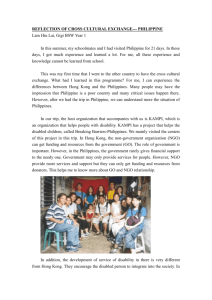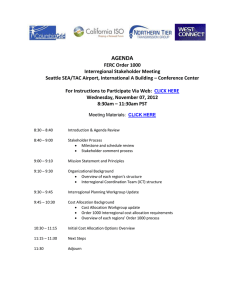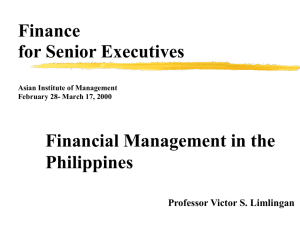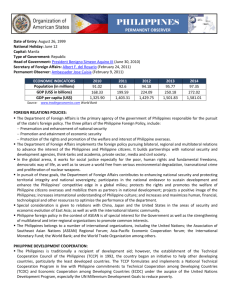Targetting Appropriate Transport Infrastructure Investment for
advertisement
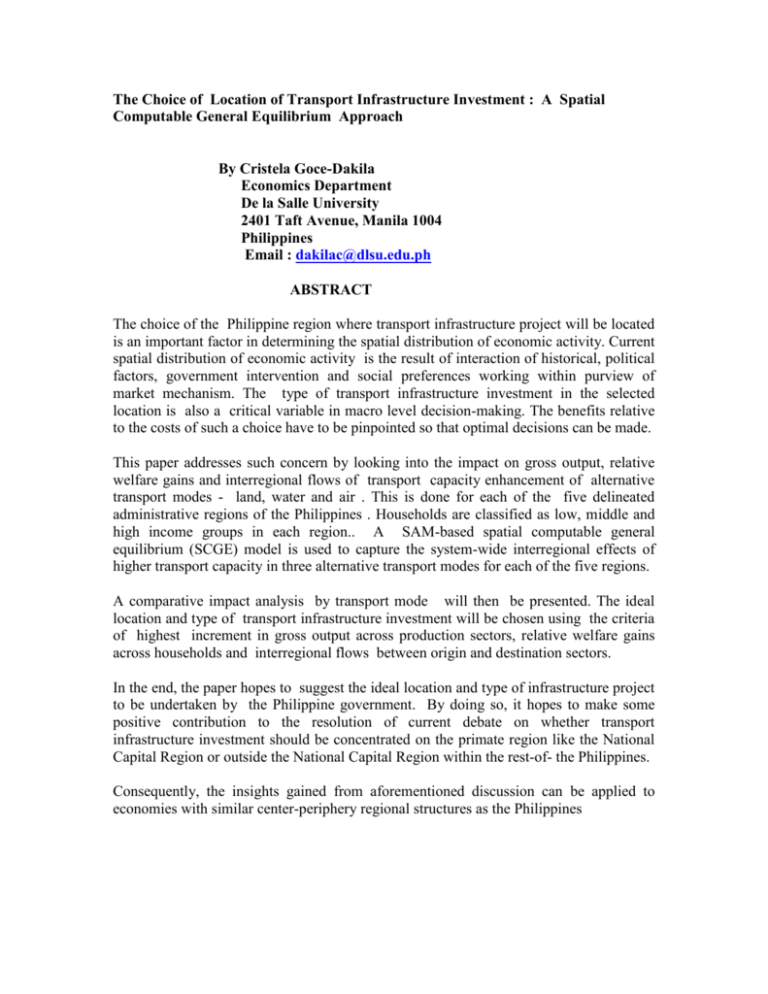
The Choice of Location of Transport Infrastructure Investment : A Spatial Computable General Equilibrium Approach By Cristela Goce-Dakila Economics Department De la Salle University 2401 Taft Avenue, Manila 1004 Philippines Email : dakilac@dlsu.edu.ph ABSTRACT The choice of the Philippine region where transport infrastructure project will be located is an important factor in determining the spatial distribution of economic activity. Current spatial distribution of economic activity is the result of interaction of historical, political factors, government intervention and social preferences working within purview of market mechanism. The type of transport infrastructure investment in the selected location is also a critical variable in macro level decision-making. The benefits relative to the costs of such a choice have to be pinpointed so that optimal decisions can be made. This paper addresses such concern by looking into the impact on gross output, relative welfare gains and interregional flows of transport capacity enhancement of alternative transport modes - land, water and air . This is done for each of the five delineated administrative regions of the Philippines . Households are classified as low, middle and high income groups in each region.. A SAM-based spatial computable general equilibrium (SCGE) model is used to capture the system-wide interregional effects of higher transport capacity in three alternative transport modes for each of the five regions. A comparative impact analysis by transport mode will then be presented. The ideal location and type of transport infrastructure investment will be chosen using the criteria of highest increment in gross output across production sectors, relative welfare gains across households and interregional flows between origin and destination sectors. In the end, the paper hopes to suggest the ideal location and type of infrastructure project to be undertaken by the Philippine government. By doing so, it hopes to make some positive contribution to the resolution of current debate on whether transport infrastructure investment should be concentrated on the primate region like the National Capital Region or outside the National Capital Region within the rest-of- the Philippines. Consequently, the insights gained from aforementioned discussion can be applied to economies with similar center-periphery regional structures as the Philippines




